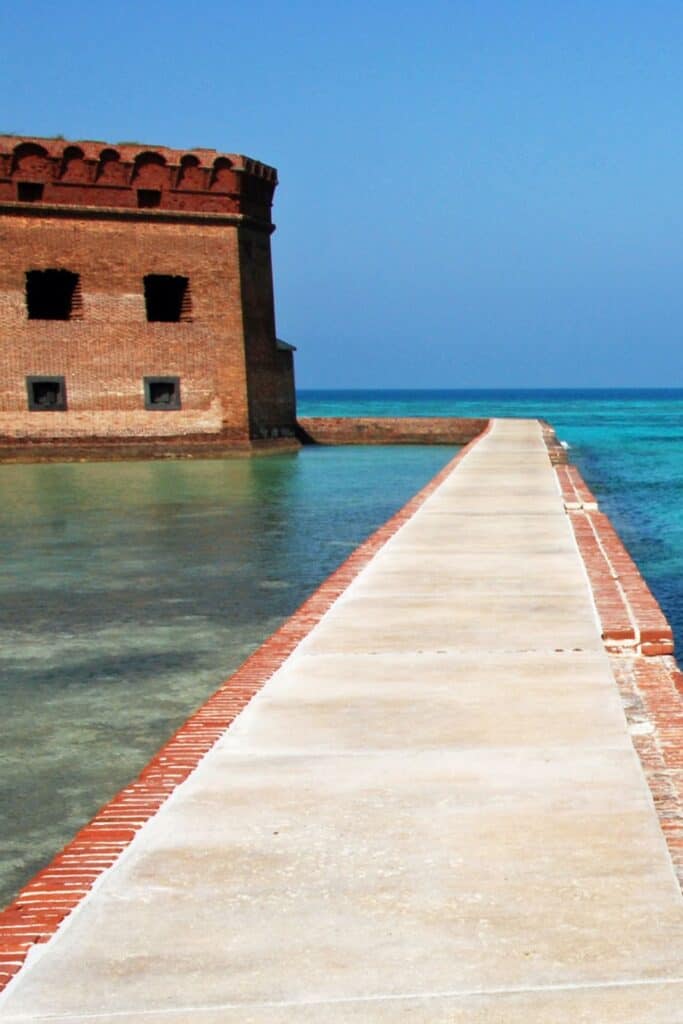
Dry Tortugas National Park is a unique and fascinating destination in the Gulf of Mexico, off the coast of Florida. The park is known for its crystal clear waters, coral reefs, and stunning white sand beaches, but it’s also rich in history. The park’s history dates back thousands of years, with evidence of human habitation on the islands dating back to the pre-Columbian era. Over the centuries, the islands were visited by a range of explorers, pirates, and military forces, each leaving their mark on the landscape and the culture of the region.
Early History
The earliest known inhabitants of the Dry Tortugas were the Calusa people, who lived on the islands from around 500 A.D. to the 1700s. The Calusa were a powerful and advanced culture that relied heavily on fishing, and they built elaborate canals and water management systems to support their way of life. They also built mounds and other structures on the islands, some of which are still visible today.
In the 1500s, Spanish explorers began to visit the Dry Tortugas, and they named the islands “Las Tortugas” (the turtles) due to the large number of sea turtles that lived in the surrounding waters. The Spanish also built a number of forts and other structures on the islands, including a small fortification on Loggerhead Key that was used to defend against pirates and other threats.
Pirates and Privateers
Throughout the 17th and 18th centuries, the Dry Tortugas were a popular spot for pirates and privateers, who used the islands as a base for their operations. One of the most famous pirates to visit the Dry Tortugas was the notorious Captain Kidd, who is said to have buried treasure on one of the islands.
The U.S. Military
In the 1800s, the United States military began to take an interest in the Dry Tortugas. In 1825, the government built a lighthouse on Garden Key to help guide ships through the treacherous waters around the islands. The lighthouse still stands today and is a popular attraction for visitors to the park.
During the Civil War, the Dry Tortugas were an important strategic location for the Union Army, and the government built a large fortress on Garden Key to defend against Confederate forces. The fortress, which is now known as Fort Jefferson, was one of the largest and most advanced forts in the country at the time, and it played an important role in the Union’s efforts to blockade Confederate ports.
The Dry Tortugas remained under military control for many years after the Civil War, with the Army using the islands as a quarantine station and a supply depot for ships passing through the Gulf of Mexico. In 1935, the islands were designated a national monument, and in 1992, they were upgraded to national park status.
Visiting the Park
Today, visitors to Dry Tortugas National Park can explore the islands and learn about their rich history. The park is home to a range of historic structures, including the lighthouse and Fort Jefferson, which visitors can tour and learn about the military history of the region. There are also several shipwrecks in the waters around the islands, which can be explored by snorkelers and scuba divers.
In addition to its history, Dry Tortugas National Park is also known for its stunning natural beauty. The park is home to an abundance of marine life, including sea turtles, dolphins, and a variety of fish and coral. The beaches and waters around the islands are perfect for swimming, snorkeling, and sunbathing, and visitors can also enjoy hiking, birdwatching, and other outdoor activities.
The history of Dry Tortugas National Park is long and rich, with evidence of human habitation dating back thousands of years. From the Calusa people to Spanish explorers, pirates, and military forces, the islands have been shaped by a range of cultures and traditions.
Today, Dry Tortugas National Park is a unique and exciting destination for visitors looking to explore the history and natural beauty of the region. With its stunning beaches, crystal-clear waters, and rich cultural heritage, the park offers something for everyone. Visitors can explore the historic structures, learn about the military history of the islands, and immerse themselves in the natural beauty of the Gulf of Mexico.
If you’re planning a visit to Dry Tortugas National Park, be sure to take some time to learn about the park’s history and the many cultures that have left their mark on the islands. Whether you’re a history buff, a nature lover, or just looking for a unique and exciting vacation destination, Dry Tortugas National Park is sure to be a highlight of your trip to Florida.
Related posts:
Dry Tortugas National Park is a unique and stunning destination located in the Gulf of Mexico, around 70 miles west of Key West, Florida. The park consists of a cluster of small islands and coral reefs, most notably the historic Fort Jeffer...
Dry Tortugas National Park lies in the Gulf of Mexico off of Key West, Florida. It contains seven islands and protected coral reefs as well. Garden Key is home to the historic Fort Jefferson and beautiful beaches. On the island of Key West, Florid...